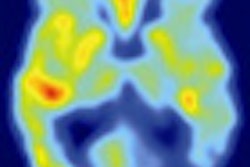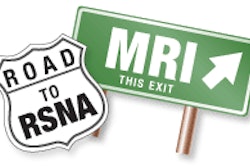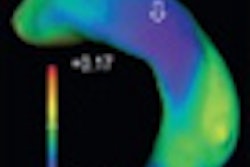Sunday, November 28 | 11:15 a.m.-11:25 a.m. | SSA17-04 | Room N226
In this paper presentation, researchers from Stanford University in Stanford, CA, plan to detail evidence that arterial spin labeling (ASL) MRI may yield clinically valuable information on collateral blood flow in patients with cerebrovascular disease.Digital subtraction angiography (DSA) has been the gold standard in patients with Moyamoya disease, a condition characterized by progressive stenosis of the supraclinoid anterior circulation and the development of extensive collateral vessels.
"Previous studies have shown that the single most important factor in prognosis following a large-artery ischemic stroke is the presence or absence of good collateral vessels that can bypass the proximal clot and supply blood to the tissue at risk," said study co-author Greg Zaharchuk, MD, PhD. "Usually, one had to use angiography to make this determination, but it would be useful to determine collateral status with a noninvasive method to improve triage to appropriate therapies, such as [intra-arterial] or [intravenous] tPA or mechanical thrombectomy."
In this study, arterial spin-labeled MRI and DSA images were obtained within four days of each other in 21 patients with Moyamoya disease. Two neurointerventional radiologists scored DSA images using a four-point collateral grading scale in 10 regions-of-interest (ROI) in each hemisphere. ASL images were scored in a similar way based on the presence of arterial transit artifact by a separate neuroradiologist and were compared to DSA on an ROI basis.
Using DSA, the study group found the prevalence of collateral flow was 54%, with "moderately strong" agreement between arterial spin labeling and DSA, the authors noted.
The evaluation of ASL-MRI's ability to identify the difference between any level of collateral flow and normal antegrade perfusion found that sensitivity was 85%, specificity was 84%, positive predictive value was 86%, and negative predictive value was 83%.
"ASL is very sensitive to measure blood flow that arrives later than expected, since the label appears concentrated in the feeding arteries rather than its normal location, the brain's capillary bed," Zaharchuk added. "For this reason, it gives a sensitive indication of regions where flow is arriving late, as in collateral pathways."
Based on the results, the researchers concluded that arterial spin labeling MRI can noninvasively predict the presence and intensity of collateral flow in Moyamoya patients using DSA as a gold standard.
Although Zaharchuk and colleagues are continuing their research on patients with Moyamoya disease, they also plan to extend their work to acute ischemic stroke and to test the hypothesis that the presence of collaterals, based on ASL imaging, is as strong a predictor of good outcome as is the gold-standard angiographic study.



.fFmgij6Hin.png?auto=compress%2Cformat&fit=crop&h=100&q=70&w=100)




.fFmgij6Hin.png?auto=compress%2Cformat&fit=crop&h=167&q=70&w=250)











